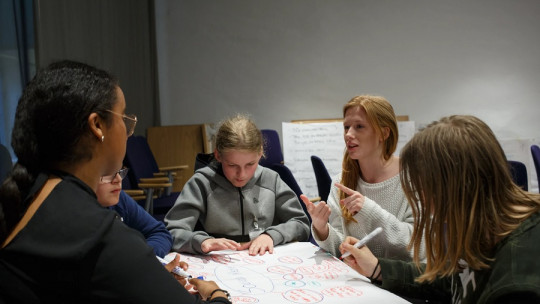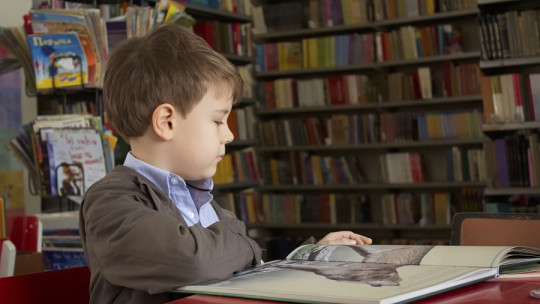
In every social institution it is necessary to respect a set of rules, which specify which behaviors are accepted and which are reprehensible. By letting the public know how they should behave, good coexistence is guaranteed.
School regulations are a type of regulation specifically focused on educational contexts and, above all, aimed at teachers, students and other workers in schools and institutes, although they also exist in other types of centers.
These types of regulations are fundamental in every educational institution, regardless of what age group or type of student it is aimed at, and below we will discover why.
What is a school regulation?
The school regulations are a set of norms, rules, instructions and prohibitions that regulate life within an educational institution These standards specify what rights and also obligations that must be respected and fulfilled within the institution and the areas that are part of it.
They not only focus on students, but also address teachers and other workers at the center, such as cleaning professionals and cooks, in addition to establishing the correct relationship between the people who come to the center. Like all regulations, the main objective of this type of rules is to regulate the coexistence of people, guaranteeing peace through a code of conduct adapted to the environment.
School regulations, which could well be called academic or educational, We do not only find them in schools and institutes There are also them in universities, vocational training centers, language schools… However, they are especially important in school and high school. The reason for this is easy to understand. Children and adolescents are still in the process of socialization, assimilating social norms that, if respected, will allow them to develop as socially adapted individuals.
Although the work of parents and contact with other children and adolescents helps young people acquire appropriate patterns of social behavior, it can always happen that they come from an unstructured environment. In that case, the child or adolescent does not have a model in their home to teach them how to behave correctly.
Fortunately, School regulations can help you know and understand what an appropriate pattern of behavior is in your social life, making this regulation make up for the deficiencies of your home. Although it may seem that school regulations are nothing more than simple regulations, taking into account how much young people have to learn in social aspects, knowing what the school regulations of your center are is like acquiring any other educational knowledge, only This is more extrapolable to real life than knowing the table of elements or doing trigonometry.
As the name itself indicates, the school regulations have rules that are valid only within their facilities, that is, classrooms, hallways, common areas and other joint locations. This does not mean that these norms are radically different from the rules, prohibitions and instructions that are expected to be followed in public life or in family life. In fact, in many aspects they coincide and learning to behave at school serves to learn how to behave on the street.
However, in its entirety, the school regulations It is solely designed to guarantee school coexistence Likewise, this should not be understood as the school regulations granting the educational center laws independent of those of the state. Obviously, no school regulation is above or nullifies the laws imposed by other hierarchies superior to it, such as the municipality, the region and, of course, the sovereign state.
Characteristics of a school regulation
In general, school regulations have the following characteristics.
1. Regulatory codes
They are written, complete and explicit regulatory codes These codes specify what are the accepted behaviors within the educational community, what rules must be followed by members of the community or those who visit it at a given time.
2. Specific to the center
Its area of influence is specific to the center, that is, They are intended to be followed only by the school or institute in which they were developed They must also be followed in any situation that, although outside the center, is managed by it, such as an excursion or school camps.
3. Articulated
They are articulated to the extent that They are subdivided into different articles or sections, like any other formal document That is to say, they are not a simple piece of paper on which four rules have been put without thinking, but rather an attempt has been made to think about all the assumptions and situations that may occur in the center, so that it is very clear what the behaviors are. desirable and which are not.
Differences between educational centers
Although each center can establish its own school regulations, as a general rule Public centers are subject to the same regulations, imposed by the Ministry of Education or the regional educational government. On the other hand, private centers are more free in this aspect, although not without completely ignoring the requirements of the Ministry of Education.
Another clearer difference between public and private centers in this aspect is how, in most cases, private ones specify what clothing or appearance must be worn in the center For example, you must wear the school uniform, piercings or tattoos are prohibited, certain haircuts are prohibited…
Example of school regulations
Below we are going to give an example of what a school regulation would be like, based on what most of them agree on.
Rights
Be listened to and guided depending on the set of educational or personal needs they may have.
Receive recognition for your academic dedication and compliance with existing discipline, your perseverance and good behavior.
Participate in extracurricular activities organized by the center.
Be treated with respect equally and fairly.
To know in a timely manner both the schedule and the school calendar, the exams, the institute’s rules or the services to which you can access.
Right to explain if not attending class.
Students have the right to eat in the designated area, such as the patio and cafeteria.
Students will be able to use all the facilities, workshops, toilets and other common areas as long as their use is not contraindicated (construction, fire…)
All students have the right to access the library, study there during the established hours and borrow books, indicating which ones have been taken and when they should be returned.
Students may have opinions and points of view different from those of the teacher, without this affecting their grade and as long as they have been said with respect and politeness.
Obligations
Make proper and correct use of the facilities, without destroying them.
Have good conduct inside and outside the institute.
Stay at the center within the established schedule.
Treat classmates, teachers, and other employees of the institute with respect.
Obey the teacher in everything he indicates, as long as it does not violate the student’s rights.
Properly justify your non-attendance to class
Actively participate in activities organized by the center.
You cannot enter the classrooms, gym or cafeteria without the permission of the teachers or outside of established hours.
They must be turn in all books borrowed from the library within the agreed time frame and in suitable conditions.
It is prohibited to bring sharp objects into the center, such as razors or knives. It is also not allowed to enter with firearms or crossbows. If they are brought without being used, the offending student will be expelled. If you use it, the police will be called.
The integrity of the facilities must be respected that is, do not break tables, desks, glass, benches, blackboards and any other element of the institution.








